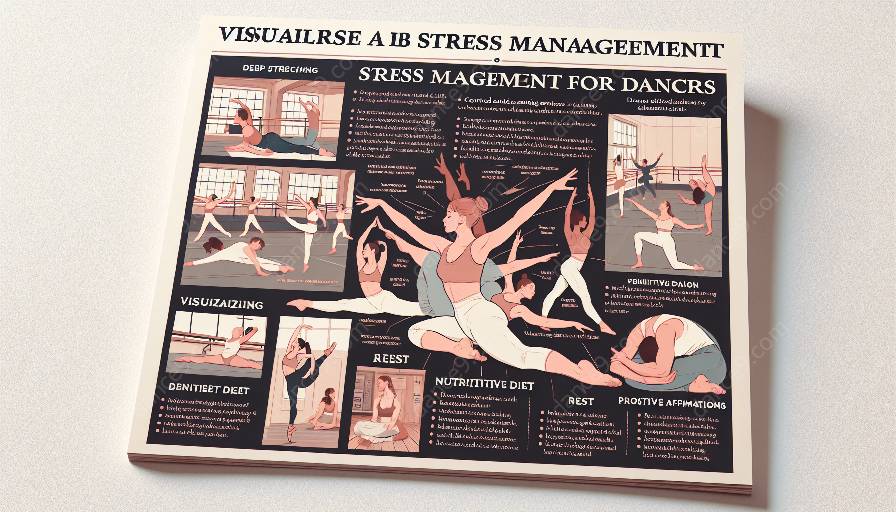Stress management is a critical aspect of maintaining physical and mental well-being in the dance industry. However, there are several misconceptions surrounding this topic that can hinder dancers from effectively managing their stress. In this article, we will explore these misconceptions and provide valuable insights into stress management techniques for dancers as well as the importance of physical and mental health in dance.
Misconception 1: Stress is Inevitable in Dance
One of the common misconceptions in the dance industry is that stress is an unavoidable part of the profession. While dance can be physically and mentally demanding, it is essential to understand that stress can be managed effectively with the right techniques and mindset. Dancers often face intense performance schedules, deadlines, and rigorous training, leading them to believe that stress is an inherent part of their career. However, by adopting proper stress management techniques, dancers can learn to navigate the challenges without compromising their well-being.
Misconception 2: Ignoring Mental Health can Lead to Success
Some dancers believe that focusing solely on physical training and technique is the key to success in the dance industry. This misconception leads to neglecting the importance of mental health and emotional well-being. In reality, mental health plays a significant role in a dancer's overall performance and longevity in their career. By addressing stress and anxiety, dancers can enhance their creativity, focus, and resilience, ultimately improving their dance abilities.
Misconception 3: Self-Care is a Sign of Weakness
Another prevalent misconception is that prioritizing self-care is a sign of weakness in the dance industry. Many dancers feel the pressure to constantly push their limits and endure physical and emotional strain without taking breaks or engaging in self-care activities. This mindset can lead to burnout, injuries, and decreased performance. It is essential for dancers to understand that self-care is not a weakness but rather a vital component of maintaining peak performance and well-being.
Effective Stress Management Techniques for Dancers
Now that we have debunked some of the common misconceptions about stress management in the dance industry, it is important to explore effective stress management techniques that dancers can incorporate into their daily routine. These techniques are designed to promote physical and mental health, enhance performance, and create a balanced lifestyle.
1. Mindfulness and Meditation
Practicing mindfulness and meditation can help dancers alleviate stress, improve focus, and enhance emotional well-being. By incorporating mindfulness exercises into their daily routine, dancers can develop a greater sense of self-awareness and resilience to cope with the demands of their profession.
2. Proper Nutrition and Hydration
Good nutrition and hydration play a crucial role in managing stress and maintaining physical health. Dancers should prioritize a well-balanced diet and adequate hydration to support their energy levels, recovery, and overall well-being.
3. Rest and Recovery
Allowing sufficient time for rest and recovery is essential for preventing burnout and injuries. Dancers should prioritize quality sleep, recovery days, and relaxation techniques to recharge both physically and mentally.
4. Seeking Professional Support
Dancers should not hesitate to seek professional support, such as counseling or therapy, to address stress, anxiety, or any mental health challenges they may encounter. Professional guidance can provide valuable tools and strategies for managing stress effectively.
The Relationship between Physical and Mental Health in Dance
Understanding the interplay between physical and mental health is crucial for dancers to maintain a sustainable and fulfilling career. Both aspects are deeply interconnected and influence each other's well-being.
Impact of Physical Health on Mental Well-being
Physical injuries and exhaustion can significantly impact a dancer's mental well-being, leading to stress, frustration, and emotional strain. By prioritizing physical health through appropriate training, injury prevention, and rehabilitation, dancers can mitigate the negative impact on their mental wellness.
Impact of Mental Well-being on Physical Performance
Mental resilience, focus, and emotional stability directly impact a dancer's physical performance. Managing stress, anxiety, and emotional challenges can lead to improved coordination, expression, and overall quality of movement in dance.
By acknowledging the relationship between physical and mental health, dancers can develop a holistic approach to their well-being, leading to better performance and greater satisfaction in their career.


































